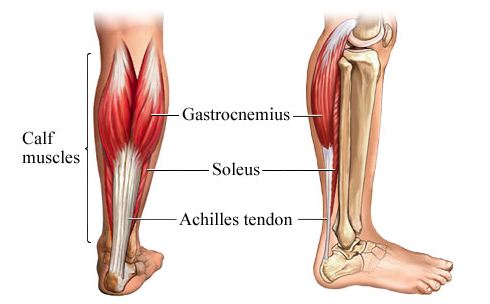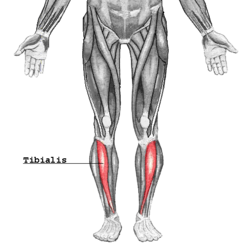
Curse of Small Calves
Calves are one of the few muscles that don’t receive much attention when evaluating someone’s physique but receives lots of attention when it’s obvious they’re lagging behind.
Your calves help stabilize the upper leg muscles (quadriceps, hamstrings) when distributing force from heavy compound lifts, such as the deadlift or squat.
Without prioritizing training for your calves, your lower body strength will be limited to lighter weights, which means slower overall leg development.
In spite of this, natural weightlifters can add a considerable amount of size to them with enough focus and hard work.
How to Exercise for Bigger Calves
Your calf muscles are composed of two large muscles; the soleus and the gastrocnemius.

As you can see, the larger portion of the calves is the gastrocnemius, as both heads of the muscle form the large heart shape when they’re properly developed.
The soleus muscle lies underneath the gastrocnemius as it’s located further down the shaft of the fibula bone. The gastrocnemius and the soleus muscles are engaged depending on whether the knee joint is flexed or extended.
The third major portion of the calf is anterior of the lower leg, known as the tibialis anterior.

The tibialis anterior is a small calf muscle, but greatly affects the overall look of the lower legs from the front view. An undeveloped tibialis can make your calves appear very small, in spite of the larger muscles in the posterior leg.
The tibialis anterior can only be developed with a dorsiflexion movement, similar to depressing a gas pedal of a car.
Some gyms have tibialis calf machines on the floor, but you can substitute this exercise with leg press extensions.
Best Calf Exercises
Calf exercises don’t have to be restricted to the weight room, they can be done from almost anywhere you can imagine. The trick to doing these exercises are reps and plenty of them.
The calf muscles are more stubborn to grow than other areas because of the ratios of fast-twitch muscle fibers to slow-twitch muscle fibers.
Fast-twitch muscles grow much faster as they have more blood capillaries and higher potentials for hypertrophy growth than slow-twitch fibers.
This is why you can’t train calves like any other muscle group; if you’ve had a difficult time building your calves for a long time, you probably haven’t trained them with enough intensity.
The best exercise for building calf muscles should be standing calf raises done with intensity for progressive growth over a period of time. The video below gives the best example of how these should properly be done.
The Wrap Up
If your calf muscles aren’t developing with your current training, it’s probably due to overtraining or not working with enough intensity. To grow your calves faster, perform a standing calf raise using a barbell and work on progressing with heavier weights slowly each week. After a couple of months, compare the development of your upper arms and lower legs to determine how far your training has come along.

Leave a Reply
You must be logged in to post a comment.